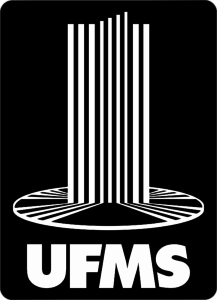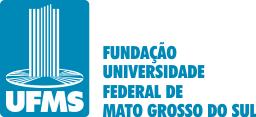Use este identificador para citar ou linkar para este item:
https://repositorio.ufms.br/handle/123456789/13093Registro completo de metadados
| Campo DC | Valor | Idioma |
|---|---|---|
| dc.creator | Tassio Fabiano Ferreira Farina | - |
| dc.date.accessioned | 2025-11-17T15:55:47Z | - |
| dc.date.available | 2025-11-17T15:55:47Z | - |
| dc.date.issued | 2025 | pt_BR |
| dc.identifier.uri | https://repositorio.ufms.br/handle/123456789/13093 | - |
| dc.description.abstract | ABSTRACT This dissertation aims to present the results of research carried out in the context of Portuguese language teaching, where comic books (comics) have stood out as an attractive and engaging form of textual expression. Combining visual and linguistic elements, this genre presents itself as a pedagogical tool rich in possibilities for developing students' reading, writing and communication skills. Comic books have their own language, characterized by the integration of sequential images, speech bubbles, onomatopoeia and visual resources that help in the construction of the narrative. This form of multimodal communication challenges students to interpret and produce texts that effectively combine verbal and non-verbal elements. This research, with a qualitative approach, is framed as action research, as it is developed in the context of the Professional Master's Degree in Language Studies – PROFLETRAS and presupposes the active participation of the teacher and the class analyzed. The objective of the research iss to identify and analyze the difficulties faced by elementary school fifth grade students of in the production of comic books. Furthermore, through the didactic sequence as a pedagogical intervention tool, moments of reflection, replanning of classes and adaptation of classroom practices, the study intends to present a methodological proposal for teaching textual production of comics based on fables. During the application of the didactic sequence and analysis of the students' production, the characteristics of the comic book genre and the mandatory, optional and sequential compositional elements that were challenging to the students in their written productions will be identified. To this end, the theoretical foundation of this research is based on studies of multimodal text (Granström, House, Karlsson, 2002;Barros, 2009; Teixeira, Faria, De Sousa, 2014; Jewitt, Bezemer, O'Halloran, 2016), Systemic-Functional Linguistics (Halliday, 1994; Halliday, Mathiessen, 2013), Visual Design Grammar (Kress, Van Leeuwen, 2006; 2020) and studies on context, text, register and genre developed by Hasan (1995, 2004, 2009), Matthiessen (1993, 2013) and Martin (1992). Interventions will be carried out in the writing practices of 5th year C students at Escola Municipal Flausina de Assunção Marinho (Três Lagoas-MS), applying the assumptions of the Didactic Sequence (Dolz, Noverraz and Schneuwly, 2004) and in accordance with the due and necessary ethical protocols. It is expected that, at the end of the study and analysis of the students' productions, students' advances in adapting to the genre and in the use of verbal and non-verbal language to express ideas, emotions and humor in the production of comics will be identified. The results and development of the didactic sequence obtained in this research will be useful for educators who face similar learning situations in their classes, enabling the application of more effective pedagogical approaches aimed at developing students' textual production. Keywords: Comic books; Multimodality; Following teaching; Genres. | - |
| dc.language.iso | pt_BR | pt_BR |
| dc.publisher | Fundação Universidade Federal de Mato Grosso do Sul | pt_BR |
| dc.rights | Acesso Aberto | pt_BR |
| dc.subject | Histórias em quadrinhos | - |
| dc.subject | Multimodalidade | - |
| dc.subject | Sequência didática | - |
| dc.subject | Gêneros. | - |
| dc.title | PRODUÇÃO DE HISTÓRIAS EM QUADRINHOS BASEADAS EM FÁBULAS: UMA PROPOSTA DE INTERVENÇÃO PEDAGÓGICA COM USO DA SEQUÊNCIA DIDÁTICA | pt_BR |
| dc.type | Dissertação | pt_BR |
| dc.contributor.advisor1 | Ulisses Tadeu Vaz de Oliveira | - |
| dc.description.resumo | RESUMO Esta dissertação apresenta o resultado de uma pesquisa realizada no contexto do ensino de Língua Portuguesa, onde as histórias em quadrinhos (HQs) têm se destacado como uma forma atrativa e envolvente de expressão textual. Combinando elementos visuais e linguísticos, esse gênero apresenta-se como uma ferramenta pedagógica rica em possibilidades para o desenvolvimento das habilidades de leitura, escrita e comunicação dos estudantes. As histórias em quadrinhos possuem uma linguagem própria, caracterizada pela integração de imagens sequenciais, balões de fala, onomatopeias e recursos visuais que auxiliam na construção da narrativa. Essa forma de comunicação multimodal desafia os estudantes a interpretarem e produzirem textos que combinem efetivamente elementos verbais e não verbais. A presente pesquisa, de abordagem qualitativa, está enquadrada no tipo pesquisa-ação, uma vez que foi desenvolvida no contexto do Mestrado Profissional em Letras – PROFLETRAS e pressupõe a participação ativa do docente e da turma analisada. O objetivo da pesquisa foi identificar, analisar e sanar as dificuldades enfrentadas por estudantes pertencentes ao 5º ano do ensino fundamental na produção de histórias em quadrinhos. Além disso, por meio da sequência didática como ferramenta de intervenção pedagógica, momentos de reflexão, replanejamento das aulas e adequação das práticas de sala de aula, o estudo apresentou uma proposta metodológica de ensino de produção textual de HQs com base em fábulas. Durante a aplicação da sequência didática e análise da produção dos alunos, foram identificadas as características do gênero HQ e os elementos composicionais obrigatórios, opcionais e sequenciais que se representaram desafiadores aos alunos em suas produções escritas. Para tanto, a fundamentação teórica desta pesquisa baseia-se nos estudos do texto multimodal (Granström, House, Karlsson, 2002; Barros, 2009; Teixeira, Faria, De Sousa, 2014; Jewitt, Bezemer, O'Halloran, 2016), na Linguística Sistêmico-Funcional (Halliday, 1994; Halliday, Mathiessen, 2013), Gramática do Design Visual (Kress, Van Leeuwen, 2006; 2020) e estudos sobre contexto, texto, registro e gênero desenvolvidos por Hasan (1995, 2004, 2009), Matthiessen (1993, 2013) e Martin (1992). Foram realizadas intervenções nas práticas de escrita de alunos do 5º ano C da Escola Municipal Flausina de Assunção Marinho (Três Lagoas-MS), aplicando os pressupostos da Sequência Didática (Dolz, Noverraz e Schneuwly, 2004) e em conformidade com os devidos e necessários protocolos éticos. Ao final do estudo e análise das produções dos alunos, foram identificados avanços dos estudantes na adequação ao gênero e no uso da linguagem verbal e não verbal para expressar ideias, emoções e humor na produção de HQs. Os resultados e o desenvolvimento da sequência didática obtidos nesta pesquisa são úteis para educadores que enfrentam situações de aprendizagem semelhantes em suas turmas, possibilitando a aplicação de abordagens pedagógicas mais eficazes e direcionadas ao desenvolvimento da produção textual dos alunos. Palavras-chave: Histórias em quadrinhos; Multimodalidade; Sequência didática; Gêneros. | pt_BR |
| dc.publisher.country | Brasil | pt_BR |
| dc.publisher.initials | UFMS | pt_BR |
| Aparece nas coleções: | Programa de Pós-graduação em Letras (ProfLetras) | |
Arquivos associados a este item:
| Arquivo | Tamanho | Formato | |
|---|---|---|---|
| Tassio_dissert.pdf | 13,14 MB | Adobe PDF | Visualizar/Abrir |
Os itens no repositório estão protegidos por copyright, com todos os direitos reservados, salvo quando é indicado o contrário.

